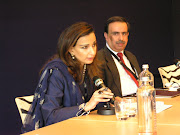With
PM Tony Abbott’s visit to India, the bilateral relationship is starting to
mature
After
six decades characterized by misperception, lack of trust, neglect, missed
opportunities and even hostility, a new chapter in India’s relations with
Australia has well and truly begun.
Consider
this: in 1955, Prime Minister Robert Menzies decided that Australia should not
take part in the Bandung Afro-Asian conference. By distancing Australia from
the ‘new world’, Menzies (who would later confess that Occidentals did not
understand India) alienated Indians, offended Prime Minister Jawaharlal Nehru
and left Australia unsure, for decades, about its Asian identity.
Sixty
years later the visit of another Liberal Prime Minister, Tony Abbott, to India
— also the first stand-alone state visit to be hosted by the Narendra Modi
government — has well and truly brought the past to a closure. When asked why
Australia had agreed to export uranium to India (a non-NPT signatory country),
Abbott was unequivocal in his statement: “We trust you!”
No
other declaration could reflect the new Australian belief in the promise and
potential of this relationship, for it was this deficit of understanding and
faith that severely undermined the relationship in the past. Abbott was not
alone: he had brought with him some of the most influential Australian
businessmen, including Anthony Pratt, who runs the world’s largest paper and paper
packaging company, Rio Tinto chief executive Sam Walsh and Lindsey Fox who has
one of the most extensive logistics and transport companies in Asia.
Unfortunately,
for most of the 20th century, India and Australia rarely had a meaningful
conversation. The reasons are not difficult to identify: the white Australia
policy, the Cold War, the Nehru-Menzies discord, India’s autarkic economic
policies, Canberra’s strident res-ponse to New Delhi’s nuclear tests and
attacks on Indian students in Victoria.
Indeed,
even after the white Australia policy became history and Australia became one
of the most multicultural of nations, opinion surveys reveal most Indians are
unaware of this fundamental change. At the popu-lar level the only real
exposure most Indians had to Australia was to the Australian cricket team — the
least multicultural of institutions.
Even
three years ago when — disgusted with the politics of the higher education
sector in India — i decided to be the inaugural director of the Australia India
Institute at Melbourne, it was seen as a giant leap of faith. I had not visited
Australia before and had little knowledge of the country.
My
friends warned me that i was literally going “Down Under”, soon to become
irrelevant and marginal to all policy issues in India. At school, my teenage
daughters were told they risked being bashed up in school and college and my
extended family was astounded.
But
today i have no doubt that it was one of the best decisions of my life. With
not one unpleasant experience in the country, as a family we have found
Australians open, friendly, fair, accepting and generous, and the country a
model of good governance.
Today
there are few countries in the Indo-Pacific which share so much in common in
both values and interest than India and Australia, and this is reflected in the
36-para joint statement. From water management to clean energy, to trauma
research, to skills and higher education, to maritime and cyber security and
counter terrorism, there is a world of opportunities that awaits the two
countries if they work in close coordination with each other.
Take
just one example: The Economist Intelligence Unit recently voted Australia,
after Switzerland, the best country to be born, based on a variety of factors
that include access to quality health and education, level of crime, gender
equality, resources and political freedom.
Melbourne
has been consistently selected as the most livable city and most other
Australian cities (including Sydney, Adelaide, Brisbane and Perth) are in the
top 20 in the world. Even given the differences in scale, there are huge
lessons in urban planning and living that Australia can offer India.
In
November Prime Minister Modi will visit Australia for the G-20 summit. This
will be the first bilateral visit by an Indian prime minister in 28 years. It
is critical that the political leadership remain in charge of the relationship
until it acquires real momentum.
The
success of Abbott’s visit was because of the triumvirate in his office — chief
of staff Petra Aldrin, senior adviser Andrew Shearer and Joshua Frydenbirg,
rising star of the Liberal Party. They helped translate Abbott’s vision into
reality. Sections of the Canberra bureaucracy can be niggardly transactional
when strong bilateral relations are cemented as much by the world of ideas as
they are by the world of commerce.
Similarly,
India’s ministry of external affairs, despite the presence of an incisive and
thoughtful secretary (East) — Anil Wadhwa — lacks the capacity to give the
relationship the attention it deserves. It is critical that the PM creates an
Australia Plus cell similarly to the one on Japan in his office.
For
the Australia-India bilateral relationship could, handled well, become the most
formidable Asian partnership of the 21st century.
(Source: The Times of India)







This comment has been removed by the author.
ReplyDelete"there are huge lessons in urban planning and living that Australia can offer India". Australia has much to improve. These lessons, plus much more are available in SKC Agenda (http://sonekichidiya.in/) but India is NOT interested. You will need to get out of your comfort zone and enter politics.
ReplyDelete